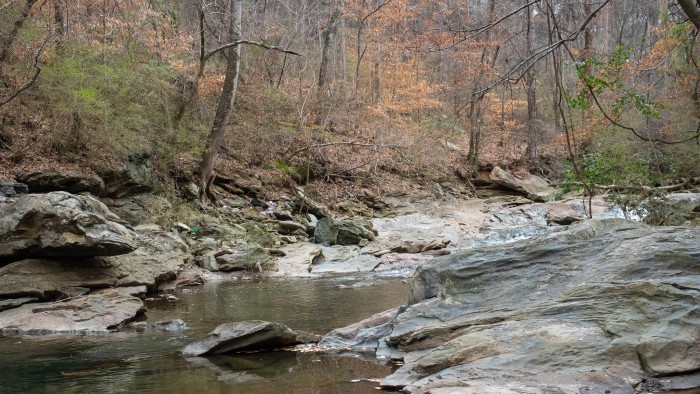Conservation Finance Boot Camp: Sharing and Benefiting From Stories of Shared Benefit

In Brief
Deals in restoration, forest carbon, wetlands or other land preservation require financial and scientific excellence.
At a virtual session of Conservation Finance Boot Camp, leaders from investing and land-trust and advising nodes in the ecosystem talked about how to optimally share skills.
A major lesson in form following function arose from the sessions: deals flourish when experts share ideas, and experts can share ideas broadly in forums like this.
How can professionals who devote their lives to sustaining real places connect in virtual space? Judging from the 2021 Conservation Finance Boot Camp, pretty intensely.
Digital again for the first time, the 2021 Conservation Finance Boot Camp drew over 120 professionals from at least six time zones to learn proven techniques for raising capital to preserve natural habitat. The main lessons took in conservation’s rising importance in global capital investment and local projects’ increasingly definable best practices. The world depends on biodiversity, and on-the-ground projects are evolving fast in their own right.
The boot camp participants knew the stakes going in, and knew more takes as the session ended. Nobody audibly gasped when Eric Hallstein of The Nature Conservancy stated that the world needs to generate $700 billion to truly preserve ecosystems. They knew the risks of staying too meek: many related when a panelist described a chief mistake as asking for too little support. (The panelist emphasized the disappointment with this Simpsonian analysis: “We could have raised twice as much. D-oh!”) They also knew, or learned, that innovation happens at the local scale. And they learned that doers and policymakers and investors find their roles- and find each other, even as avatars- in discussions that help them gain confidence and competence.
In this Boot Camp, land trust executives had evolved from talking about funders as benefactors. Now funders play a role as specialists, just like the executives do. Lauren D’Souza, a sustainability analyst for the investment firm RRG, described her company’s partnership with The Nature Conservancy as one of parallel skills. “With a property like the one Eric showed, it’s amazing to see how we can divide and conquer [a project] with [TNC masterminding] strategies like water recharge and wetland creation, strategic land retirement, permanent crop cultivation, mitigation/restoration.” Hallstein echoed the thought: “[Success] took different skills and different types of financing.”
That lesson reached dozens of learners who would not have gained entry to in-person boot camps. Those sessions in prior years included 33 people at most. One participant who hopped the digital express, Yale School of Management/School of the Environment student Katie Michels, took D’Souza’s lesson to heart. “I heard about the delineation of roles,” says Michels, a former land trust executive (and the co-student manager for this publication). “Land trust managers are not just shaking the trees for funding, but knowing the story of a place.”
Success took different skills and different types of financing.
Participants in their early career phases (or in Australia) benefited each other in the digital context with questions and encouragement and what organizers called a highly civil chat box. Relatedly, speakers talked about mutual benefits emerging across conservation finance deals.
Speakers detailed project areas where investors have wrestled with valuation and where managers have spotted critical need. These include water rights trades, forest carbon markets, and wetlands protection. Approaches to capital raising came up in several sessions.
One panelist stressed the need to get projects started quickly, comparing the predevelopment phase to “crossing an avalanche slope.” At the same time, learners heard from Hallstein that viable partnerships require trust that takes years to build. In multiyear, multibillion-dollar partnerships like TNC’s with RRG, or in comparatively liquid carbon and wetland restoration markets, panelists emphasized the danger of “being too risk averse” and the value of knowing a piece of land’s cultural and strategic context. The idea of emphasizing strengths and seeking hefty capital emerged in a context where impact investment funds and carbon or wetland credit marketplaces keep growing. They also emerge in a policy context where European governments are demanding more aggressive conservation and where American states- like Maryland, the subject of a panel case study- are developing detailed conservation finance laws with tax benefits for projects.
The key lesson to practitioners is that conservation finance should not sell itself short.
Peter Stein, who has worked in this space at Lyme Timber for many years and who helped found the Conservation Finance Network, underscored that point. Impact investment managers are sniffing conservation projects: many financial executives joined the Zoom in order to learn the vocabulary of the field. “The term impact investing is going to disappear soon.” Stein told listeners. He meant that as environmental, social and governance criteria weigh more permanently on allocation decisions, a project’s conservation outcomes will become central to risk reduction.
In that situation, small connections between professionals at events like the boot camp can ripple out into the ocean of urgent needs that speakers described. Future boot camps will likely blend in-person with digital sessions, building more moments when practitioners can share lessons and triumphs at small scale in order to build best practices at bigger scale. Conservation experts “need to tell the story of a project,” participants heard, and “private investors expect them to do so.” With biodiversity solutions forming more of the core of climate adaptation, the story of conservation forms more of the story of humanity. There’s every reason to tell it together.